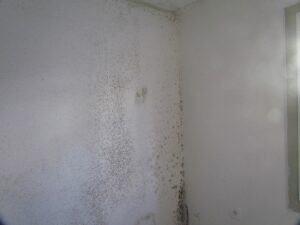Mold, how to remove mold correctly and how to fight mold

Removing mold is a necessary step to keep you healthy. In addition to the aesthetic danger, wall mold is known to carry many dangers, the most serious of which are an increased risk of cancer, harm to patients with respiratory diseases and patients with weak immune systems, and it can trigger an allergic attack. There are also studies that show that mold on walls can cause negative effects such as fatigue, forgetfulness, slow reactions, and more. Despite the many health hazards, most people do not associate health aspects with the problem of mold on the wall.
What is mold?
Mold is a general definition of fungi, made up of many types of bacteria. From this it is known that about 15 types of bacteria are dangerous to our health.
Mold feeds on various types of organic matter and continues to grow if left untreated.
Mold develops in humid conditions regardless of the room temperature.
What does mold look like?

Mold can be seen as a greenish black stain on the wall. Sometimes it tends to brown.
Mold is most commonly found in bathrooms, kitchens, or unventilated areas such as basements at home. Sometimes, due to poor sealing of the outer wall of the building, mold appears in the interior.
How can mold be removed?
Mold removal must be done in two stages and one of the parts cannot be discarded without the risk of mold returning.
- Killing mold bacteria: Use a trowel to remove anything that can be removed from the wall. You can also use sandpaper. Any remaining bacteria must then be killed with a mold-killing agent such as Denber’s Antifungus, a mold remover, or a cloth soaked in chlorine. Make sure that the solution is transparent so that it does not interfere with repainting the wall.
- At the second stage, the wall should be painted with antibacterial paint – Bakterinoll from Denber. The antibacterial dye contains fungicides, which makes it resistant to microorganisms that cause rot, fungus and odor.
To prevent mold coming back in the future, we recommend that you follow these guidelines:
- Do not leave places in the house without ventilation. This is especially true in a bathroom where the walls are absorbed by the hot water vapor during the shower and moisture remains on the walls without proper ventilation. The hood should be directed to a well-ventilated area and preferably to the open air.
- Exterior walls and roof should be sealed with Siloxane 290, a clear polysiloxane sealant, to prevent water from penetrating through the ceiling and exterior walls.
- If the problem was a wall with heavy furniture (wall cabinet) that obstructs ventilation from the wall, it is worth – if possible – move the furniture a little away from the wall.
For more information and free consultation about removing mold please contact us.
web site: denber
 English
English עברית
עברית Русский
Русский